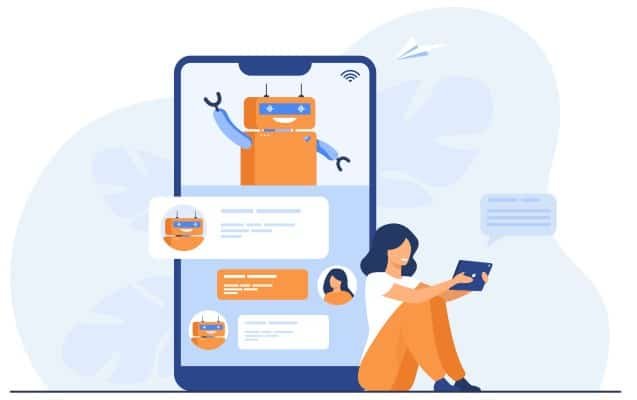One of the latest technological trends that is making a big splash is chatbots. Due to the increase in popularity, bothmarketersanddevelopersare building and developing their own bots, in order to jump on the bandwagon of this trend that, far from being a fad, is here to stay. And behind each possibility of establishing a technology (which, although it sounds like a lot now, is not new at all), there are 3 questions:What is it, why do I need one and how do you create a chatbot?Let’s analyze each of these points.
What is a chatbot?
Short Answer: A program capable of simulating a human-to-human conversation.
Long answer: the chatbot is a new form of communication with customers that, properly configured, has a series of advantages that can be key to the development, scalability and growth of a business. Through the use of natural language and conditionals, the algorithm of a chatbot is capable of maintaining a fluid conversation with a human.
Advantages of chatbots
Although there are many, both for those who interact and for those who configure it, I will summarize it in 3 points.
1. Usability.
People are increasingly running away from complex interfaces. No more navigating between menus and question categories.
2. Immediacy.
A chatbot is capable of giving you the answers you need instantly. 10 or 1,000 people at a time.
3. Personality.
Dogs tremble, a well-configured chatbot can be man’s new best friend.
5 steps to create a chatbot from scratch
To create a chatbot you can use different tools, whether they are your own for programmers or non-code tools. The logic to create a chatbot from scratch is the same in all situations and you must follow these 7 steps:
1. Identify the type of chatbot you want to create
First you must establish the reason why you are going to create this chatbot. What problem will it solve? How will it help you with your clients? By answering these questions you will be able to know if the best option is to create a chatbot with closed questions and answers or a chatbot that uses artificial intelligence to analyze the questions of your users and thus offer the best answer. If this is your first time making a chatbot, it may be easier for you to create a chatbot with closed questions and answers and based on the results and behavior of your users, then you can scale it to a model with artificial intelligence.
2. Choose a platform to create it
For the creation of a chatbot there are hundreds of platforms, in most cases they are paid but you can also find free versions with limitations that may work for you. We can divide the platforms according to the level of knowledge required to use them. Here is a list of the most used.
- Hubspot (Basic)
- Landbot (Basic)
- Zendesk (Basic)
- Chatfuel (Advanced)
- Dialogflow (Advanced)
- Python (Very advanced)
3. Design conversation flows
It is important that in a document you collect all the possible situations that your chatbot will face. All the questions you will answer, what information you need to answer, and the style in which you will answer. Once you have all this information, you can create a map that portrays the user’s journey based on their questions. With this map the creation in the tool will be easier.
If you have chosen one of the no code platforms, the creation of the conversation flows will be as simple as dragging and dropping elements, if you have chosen the more advanced options, you will have to delve into the documentation of each tool or even if you have chosen to make the chatbot With a programming language like Python, you’ll need to look to frameworks like gensim, PyNLPL, or spaCY to help you build.
4. Try the chatbot
It is time for your chatbot to see the light, for this reason it is highly recommended that you test it with a group of people who can give you feedback on the answers or possible bugs that appear along the way. This test will also help you identify gaps in your chatbot’s knowledge base and strengthen them.
5. Publish your chatbot
This may be the easiest step, however, you should not only publish it, but also create a maintenance plan. In this plan, you must establish a schedule to evaluate the performance of the chatbot and the improvements that you will make to it. It is also good that you generate different reports to help you better understand your user.




